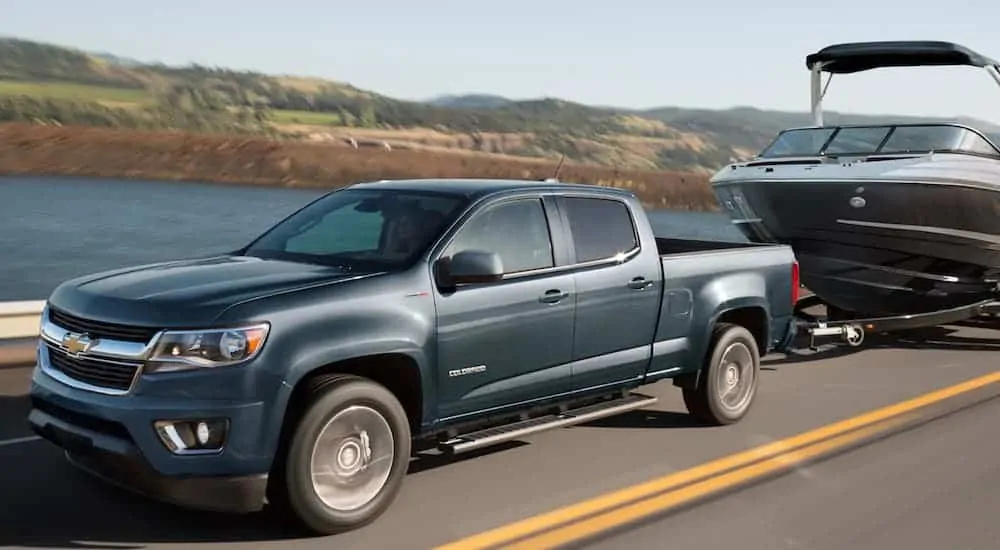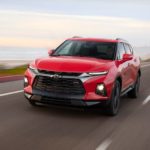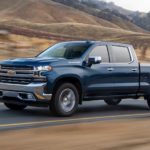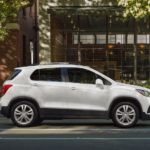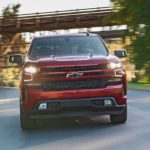Not all trucks are built the same, and with today’s abundant availability of trucks on the market, the details can rapidly become overwhelming. Which one is really the best? Well, today, we are going to help you sort out some details and dive into the comparison of the 2020 Chevy Colorado vs 2020 Ford Ranger. These are two of the most popular midsize trucks and can help to show what kind of performance and features can be found in the segment. To give a narrower and more specific focus, we are going to compare each of their mid-level trims, the Colorado LT, which starts at $27,700 and the Ranger XLT, which starts slightly higher at $28,460. So without further ado, let’s get into it.
The Engine and Its Capability
Chevy’s 2020 Colorado comes with the option of a 3.6-liter V6 engine with 308 hp and 275 lb-ft of torque, an eight-speed automatic transmission, and rear-wheel drive. The LT price includes a crew cab with a short box, and seats five. Gas mileage for the Colorado LT is 19 MPG in the city and 24 MPG on the highway.
Ford’s 2020 Ranger comes with a 2.3-liter four-cylinder engine with an electronic ten-speed transmission and rear-wheel drive, and this engine is the only option. The engine produces 270 hp and 310 lb-ft of torque. This means that while it has better torque, the horsepower lacks in comparison to the Colorado. The base price for the XLT includes the super crew cab with a short box and also seats five. Fuel efficiency is 21 MPG in the city and 26 MPG on the highway.
Both Ford and Chevy offer options to add four-wheel drive, an extended cab, and a long box. Chevy additionally offers the option of a 2.8-liter turbocharged four-cylinder diesel engine, which increases the torque to 369 lb-ft. In this category, Ford has a slight upper hand on gas mileage, but Chevy offers two alternative engines, so drivers have the choice to pick between horsepower or torque. Ford makes that decisions for drivers with their only option being superior torque.
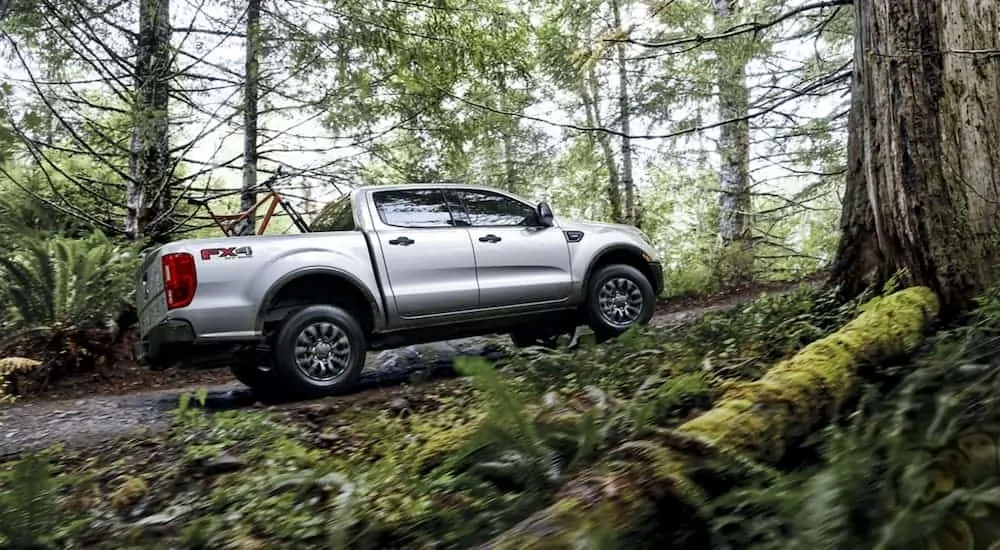
All About Towing
Towing with the Chevy Colorado LT in this comparison is best with the V6 engine. With that engine, the Colorado will put out 308 hp and get 275 pounds of torque. This means the Colorado can tow up to 7,000 pounds, but it will need to have options like tow-haul mode and a trailering package added. With the addition of the trailering package, buyers will gain a 2-inch receiver hitch with 4- and 7-pin connectors, a harness and sealed connector for trailer lights, and an automatic locking rear differential. Additional features like hitch guidance and an integrated trailer brake controller can also be added.
Ford’s Ranger, with the turbocharged 2.3-liter engine, will put out 270 hp with 310 pounds of torque. The Ranger can tow up to 7,500 pounds with this engine, and it comes with provisions for 4-pin wiring and ball mounting. Provisions, however, do not mean it’s tow-ready. It also comes with trailer sway control to prevent rolling. However, automatic locking rear differential and hill descent control are options that must be added, as well as the 7-pin connector included in the optional trailer towing package.
Even though Ford offers 500 more pounds of towing capacity when fully equipped, those 500 pounds do come with a cost. With all of the needed upgrades for superior towing, this category is a toss-up because it will depend on how necessary one’s towing capacity is in comparison to their budget. The 500 extra pounds of towing could break the bank and could be unnecessary. So really, this subject is based on personal preference.
Fancy Exteriors
Starting with the Chevy Colorado, we’ll begin with one of the more exciting features: the tailgate. On the LT, it comes standard with an EZ lift and lower tailgate, which moves with the assistance of a torsion bar, and locks and unlocks with the same key that remotely starts the truck. Other exterior features are a corner step on the bumper, a spotter mirror, halogen headlights, cargo bed lighting, capless fuel fill, and aluminum alloy wheels.
Ford’s Ranger XLT comes with a power-locking tailgate, halogen headlights and fog lights, cargo bed lighting, capless fuel fill, and aluminum alloy wheels. Ford adds tinted rear windows to this list of features, though neither manufacturer lists bedliner as standard. To protect the bed, even for a mid-range price, buyers will need to pay extra. In this category, Chevy takes the upper hand with a few extra features buyers will find useful in loading.
Comfortable and Spacious Interiors
Chevy’s Colorado has been praised as having a comfortable interior with a smooth ride. Controls are easy to use, plenty of cargo space and storage bins are located within the cab, and interior lighting is well-appointed. The steering wheel is leather-wrapped, seats are cloth, the rear seat folds for more cargo space, the driver’s seat is powered, and it comes with automatic climate control. Steering wheel-mounted controls access cruise control, the audio system, and phone connectivity.
Ford’s Ranger was not as well received with the ride quality when tested for 2020. Features of the interior of the Ranger are cloth seats, a rear folding seat for more cargo space, manual front seat controls, and dual climate control. Both the leather-wrapped steering wheel and powered front seats are options, not standard. Steering wheel-mounted controls access cruise control, the audio system, and phone connectivity. Once again, the Chevy seems to win out on this comparison.
Staying Safe
As far as safety, Chevy comes standard with an HD rearview camera and OnStar telematics for the Colorado. A teen driver program, remote keyless entry, tire pressure alert, and electronic traction and stability control are all driver-assisted technology. Features like remote start, forward collision, rear park assist, and lane departure are options that can be added but are not standard. The typical expectation of airbags is there, along with an engine immobilizer in case of theft.
For the Ranger, Ford offers an open image overlay for the rearview camera, and 911 assist in case of accidents. Roll stability control, rear parking sensors, keyless entry, tire pressure monitors, blind-spot monitor with cross-traffic alert, lane-keeping assist, and pedestrian detection as part of the forward-collision warning system are all driver-assisted tech that comes standard. Other features such as airbags and curve control are also standard. In this area, again, it depends on the budget and what safety features an individual is looking to have in their vehicle. However, both trucks offer a great variety of options to choose from.
Which Truck is Better?
In terms of the number of categories covered, Chevy has more engine options, a more comfortable ride and interior, the EZ lift function on the tailgate, and a better infotainment system. In general, Chevy has upgraded the Colorado ride quality to be smoother, and the command center is laid out more comfortably for ease of use. Even though the tow rating is 500 pounds less than the Ranger, Chevy offers more towing options.
Overall, Ford has not upgraded the Ranger in a long time other than tweaking the overall design. What was updated this year did not seem to improve the ride quality in a way that could match the Chevy Colorado. But, truly, a test drive is the only way actually to determine which vehicle is best for any buyer. However, in terms of this comparison, the 2020 Chevy Colorado comes out on top.
